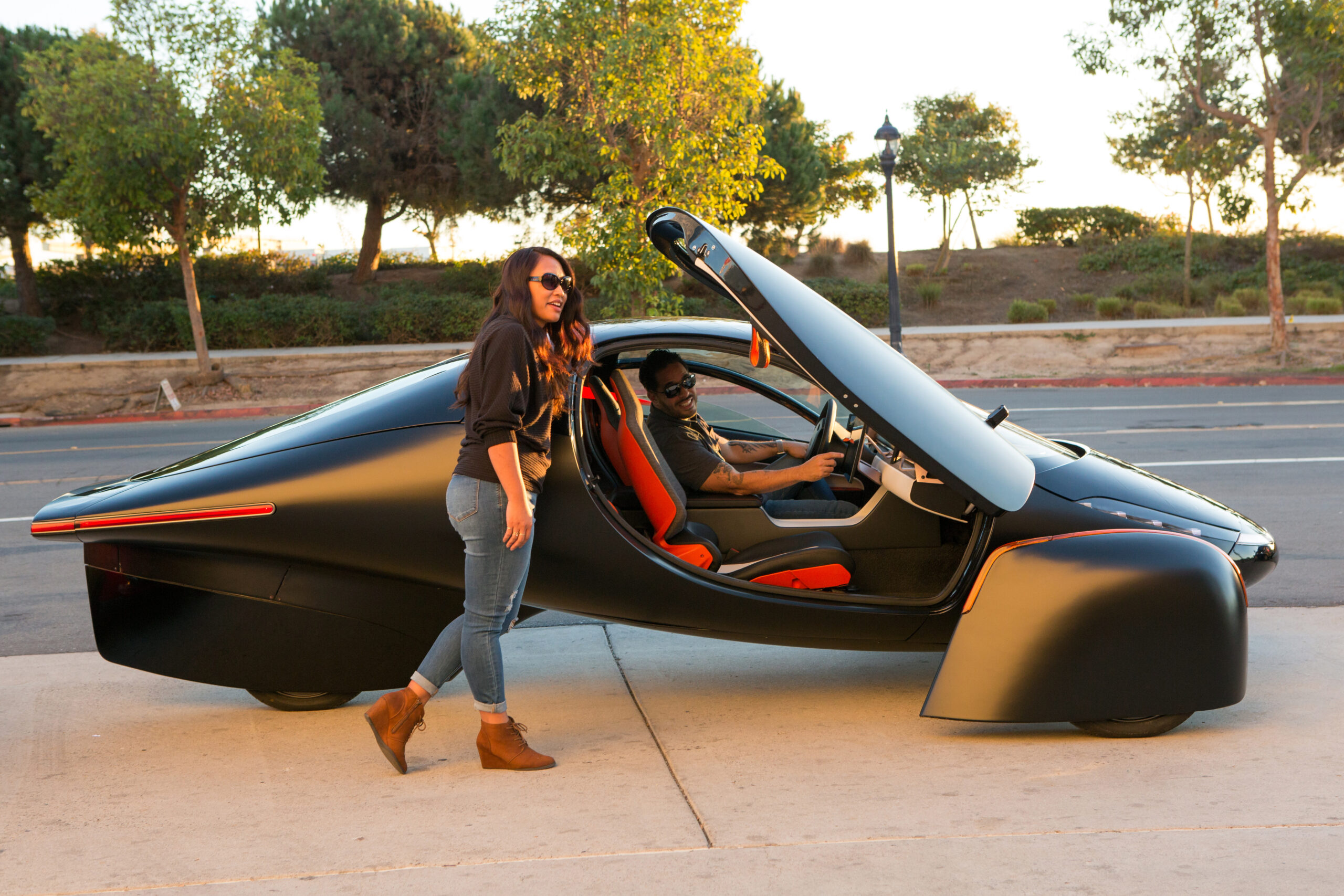A couple of California efficiency nerds (Chris Anthony and Steve Fambro) have taken low weight and low aerodynamic drag to its logical extreme and produced a three-wheeled battery electric vehicle (BEV) that is expected to begin delivery in 2021. They have 7000 pre-orders, and recently earned a delightful spread in the Washington Post (https://www.washingtonpost.com/climate-solutions/interactive/2021/solar-car/?itid=hp_health-science). Aside from ranges up to 1000 miles and on-the-roof/hood/trunk solar panels that provide up to 40 additional miles of range on a sunny day, this EV will draw attention from its outlandish shape. The Washington Post likened it to a batmobile, but it also bears a striking resemblance to a porpoise in profile.
This is not a coincidence. The porpoise has one of the lowest drag coefficients known (0.001), whereas cars are typically more like 0.5. The highly aerodynamic Tesla Model 3 has reduced drag to 0.23, whereas the Aptera comes in at 0.13. Aptera has replaced the side mirrors with side cameras (it’s about time; see photo of internal side “mirror” displays), and introduced vertical channels in the body to use passive thermal gradients to keep the car interior cool when it is parked in sunshine (and save air conditioning power).

No stone was left unturned in the inventors’ quest for efficiency. The high and narrow underbelly of the porpoise-shaped Aptera also lends itself to off-roading. One can purchase an off-road package that includes larger, sturdier wheels and higher clearance. One can purchase a camping option package for the hatchback. The car recharges while you are hiking or fishing. But off-roading in general is probably not this unique vehicle’s unique role.

Its special advantage is that it rarely needs charging, especially if it can be parked in sunshine. While adding solar panels is of negligible advantage to a conventional BEV, the power consumption of the Aptera is so low (0.1 kilowatts/mile) that even a little boost from the sun could make an appreciable difference. To put that in perspective, a conventional internal combustion engine car turns only 12-30% of the gasoline’s energy into rotating wheels; a hybrid car does better at 21-40% of the energy delivered, and BEVs run 60-80%. With its low weight and low drag the Aptera promises to exceed 90%.
It shows in power consumption. Compared to the Aptera’s 0.1 kw/mi, a Tesla model 3 consumes about 0.25 kw/mile (some BEVs exceed 0.4 kw/mi), so the same 1000-watt rooftop solar panels, if they were mounted on a Model 3, would extend the battery’s range only 16 miles. For most drivers, such a gain isn’t worth the trouble, weight, and expense of schlepping panels around on the car. But suppose you live somewhere where you must park on an unpredictable location on the street, and you haven’t easy access to work-place charging. It that case gaining 40 miles per sunny day might be all the charging you need. Instead of having to drive somewhere to charge daily, one might need only plug in monthly.
In addition, a vehicle this efficient can be fast-charged very quickly: a mediocre fast-charger (50 kw) adds 250 miles of range in about 30 min. Some DC fast chargers are pushing above 200 kw (the new Durango charger will yield 125 kw if attached to one car; 62.5 kw if shared), so much faster charging times are conceivable; the manufacturer (aptera.us) has not yet released the maximum charging rate. One can also imagine niche markets for people that live in remote places, or off-grid, where charging is more than a minor inconvenience.
But this is not just a niche vehicle. Aptera plans to release models with batteries sufficient for 400 miles range, then 600 miles range, and finally 1000 miles and 250 mile ranges. They also claim a 0-60 mph time of 3.5 sec, but this presumes a 150 mile range battery which at present is not planned for production. Nonetheless, the Aptera’s ultra-light carbon fiber body will no doubt allow the car to feel zippier than almost any other car on the road. It will come with level-2 autonomous driving. The manufacturer claims that it will pass all applicable highway safety tests before sales begin, but one can imagine a sense of foreboding when looking up at the underside of a passing semi.

Speaking of cons, there are a few others. It seats only two. It has only 25 cubic feet of storage space (though that is more than the original Bolt if all seats are occupied). Forget about roof racks or towing. The company went bankrupt once before, though that is apparently more due to the inventors’ being ahead of their time with investors than incompetent engineers. Because it has only three wheels, it does not qualify for any federal tax breaks. The $26K price is for a base model with a small battery, front-wheel drive only, and without the 700-watt trunk/frunk solar panels (all models have 300-watt roof panels). If you upgrade to the all-wheel drive 1000 mile-range model with full solar panels the price is expected to be around $50K.
If the premium model isn’t enough to draw attention, put a puppy in the back.


Pingback: So, you’re waiting for an electric pickup truck? - EV Four Corners
Pingback: So, you’re waiting for an electric pickup truck? Revised September 2021 - EV Four Corners